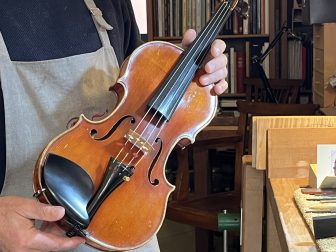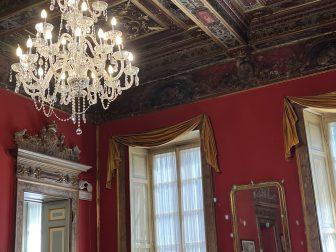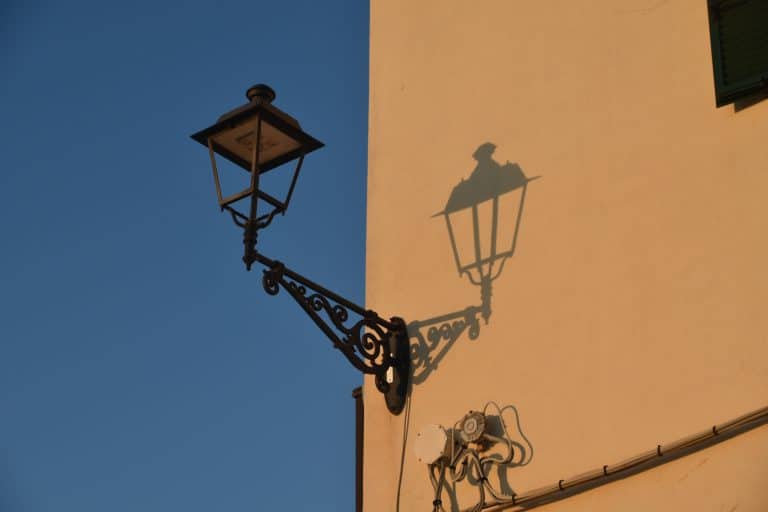
[ Aug.2020 ] When we were in Alghero in Sardinia in Italy two years ago, we looked for a walking tour to learn about history and some stories of the town, but we could not find one.
Instead, we tried riding the Trenino (the sight seeing bus in the shape of a small train) and got disappointed.
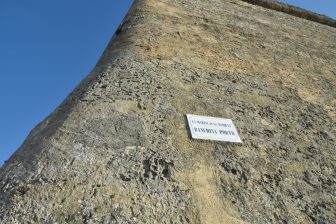
However, this time a walking tour was introduced through Airbnb website, so we jumped at it, though it was not the free one which we often see in the Eastern Europe and other places.
It cost €20 per person.
We thought it would be a group tour, but in fact it was only for us.
The guide was a 32 year old woman called Sabrina.
Another woman who was an apprentice walked together, too.
These two woman had very similar atmosphere and they were both chubby, so at first I could not tell which one was which, but Sabrina was from the north part of Sardinia and the other was from the south.
We started from just outside of the city wall where we had got on the Trenino last time.
Sabrina started talking about the history.
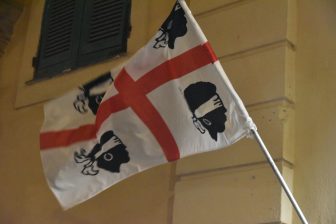
Around the 8th century when Sardinia was divided into 4 parts, the Saracen pirates occupied the island and the islanders asked for help to mainland Italy.
Responding to that, the Republic of Genoa came and got rid of Saracens and started governing Sardinia.
The flag of Sardinia is the red cross on the white background like the Genovese flag and four black heads with headbands are added in the four spaces.
These heads are Saracens’ heads apparently.
And they are not the headbands, but blindfolds, which means that Genovese won against Saracens and arrested Saracen rulers and killed them.
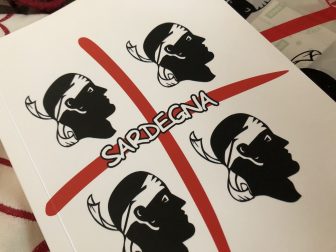
But that is too cruel, so nowadays, they added the eyes and changed the meaning to ‘they are all looking at Italy’.
This story about the flag was a great surprise to me.
Without asking, I had assumed that those people on the flag were fighters who fought for the independence of the island or something.
The flag of Corsica (France), another island just next to Sardinia has a same head and probably it has a similar meaning.
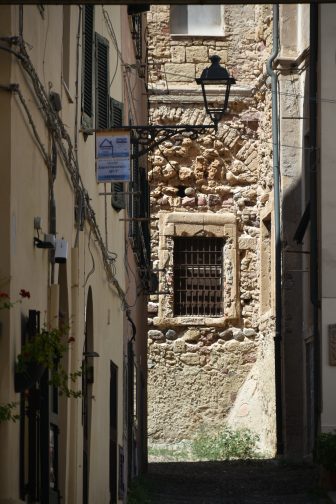
In the 14th century, the rulers of Sardinia changed from Genoa to Kingdom of Aragon of Spain.
Aragon reminded me of Zaragoza where we visited last year, which is the centre of the Aragon region, but here in Alghero, the main ruler seemed the Catalonia which was the part of the Catalan-Aragonese Confederation.
This ruler brought Catalan people to Alghero to live there and expelled all the original people in the town.
In the 18th century, Savoia family of Piedmont in Italy got in and started ruling here, but as I said, the people in Alghero were from Catalonia and spoke Catalan language.
That is why the road signs were written both in Catalan and in Italian in the old town.
According to Sabrina, there are still some Catalan speaking people here.
But the number is getting fewer, so recently they started teaching Catalan to young people free of charge.
Talking about the language, there is another original language in Sardinia.
Sabrina said that she talked with her grandparents in this Sardinian language.
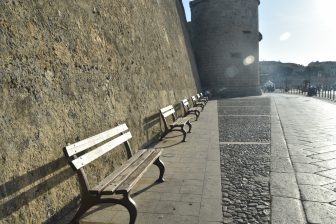
Her parents grew up in the environment in which people felt ashamed speaking the Sardinian language, so they speak only in Italian.
That reminded me of an Armenian guide who had said that she would change the languages depending on who she was speaking to.
Sabrina told us that in the middle of Sardinia in the mountainous area, some people still speak only in this Sardinian language and they are still wearing the folk costumes.


